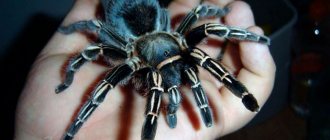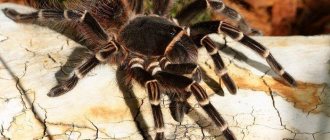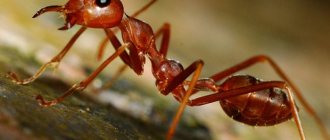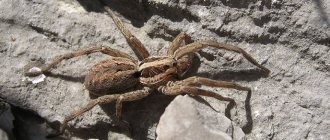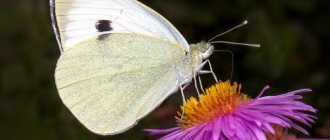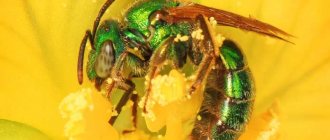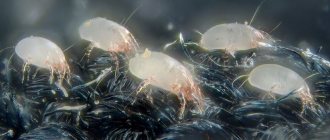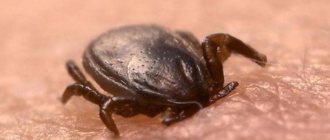First aid for insect bites
First aid measures for insect bites are undifferentiated and should be standard, regardless of the culprit. The sooner the necessary measures are taken, the fewer negative consequences the bite will cause.
First of all, it’s worth talking about what you should not do after an insect bite:
- Drink alcoholic drinks,
- smoking,
- Fuss and move actively,
- Apply heat to the bite site.
All these actions increase blood flow in the affected area, which leads to accelerated absorption of toxic and allergenic products. The inevitable result of such changes will be pronounced toxic-allergic reactions of general and local types.
The correct scope of first aid measures includes:
- Wash the bite site with cold water and laundry soap,
- Treatment with any antiseptic solutions: alcohol, chlorhexidine, menovazine, hydrogen peroxide, furatsilin,
- Pressing down the bitten area or applying a circular pressure bandage to the entire area and overlying areas. You can use either a simple or elastic bandage,
- Applying cold
- Taking tablet forms of antihistamines and antiallergic drugs: diazolin, loratadine, suprastin, claritin, erius, edem.
Thus, the process of spreading toxic substances from the primary source will be blocked as much as possible. All other well-known methods of treating insect bites can be used only after assessing the existing consequences. The duration of first aid procedures should be at least an hour. After this time, the bites are treated using various lotions, solutions, ointments and gels.
If, despite the measures taken, a progressive deterioration in the victim’s well-being occurs, this indicates a poisonous insect bite or a severe allergic reaction. In such situations, patients must be urgently taken to a medical facility, where they will receive specialized medical care. Do not neglect this advice, hoping that everything will go away on its own.
Kara-Kurt bite
The bites of these individuals are deadly to all living organisms. Typically, these venomous spiders attack defensively when they are directly affected and feel threatened. Their individuals pose the greatest danger compared to all other arachnids. The venom of females is deadly, but males are practically safe, their venom is less concentrated. After Kara-Kurta bites, soft tissues die and generally lead to severe discomfort. After being bitten by this spider, you should immediately consult a doctor.
What is a bug bite like?
You can distinguish a bug bite from other insects by several signs.
These are the main differences between bedbug bites and other insects and acne of various kinds. Having analyzed the situation, it is necessary to urgently look for the nest of insects and take emergency measures to destroy them. By the frequency of bites and their number, one can judge the number of insects.
OUR READERS RECOMMEND!
Pest-Reject repeller.
In order to be completely sure that the rashes on the body are caused by bedbugs and not mosquitoes or other insects, it is necessary to carefully examine the affected area of the skin. Numerous bedbug bites can be recognized by symptoms that indicate the following:
- the presence of specific tracks at the site of redness,
- the presence of swelling or slight edema near the wound,
- severe itching
- Sensitive people may experience an allergic reaction.
How to distinguish bedbug bites on humans from mosquito bites
The main symptoms of a bug bite are very similar to a reaction from mosquitoes. The main difference is the size of the allergic trace and the presence of the number of punctures. A mosquito always leaves only one puncture during its meal, but a bug leaves up to 6 such punctures, which is why swelling or even slight swelling occurs. While the flea almost always leaves two punctures located side by side.
Do bedbug bites itch?
Wounds are almost always accompanied by an allergy with itching. The skin lesion appears as a solid red spot. By these two signs it is easy to recognize the wound left by this particular insect. To prevent scratching the affected area of skin, which could cause infection, it is necessary to treat it with antiseptic agents. In most cases, itching and redness disappear within 10-12 hours. Therefore, it is imperative to get rid of uninvited guests as quickly as possible.
OUR READERS RECOMMEND!
In the fight against bedbugs, our readers recommend the Pest-Reject repeller. Electromagnetic and ultrasonic technology is 100% effective against bedbugs, cockroaches and other insects. Absolutely safe, environmentally friendly product for humans and pets.
How long does it take for bedbug bites to appear?
Nutrition
Photo of a tarantula spider of the genus Heteroscodra.
The toxic substances that a tarantula can inject when bitten are not fatal.
Typically, a person feels:
- pain;
- psychological experiences;
- redness and hyperemia;
- muscle cramps.
Heteroscodra, Phlogius and other species have potent convulsive toxins and may develop more severe symptoms:
- nausea;
- dizziness;
- loss of consciousness;
- significant swelling;
- muscle cramps, the duration of which can last a month or more;
- heat.
All individuals are poisonous. When talking about safe animals, it means that the substances do not have the necessary toxicity that causes irritation.
People who kept spiders of this species in their houses noted that their pets died from them. From this we can conclude that tarantulas pose a certain danger to small children, weakened individuals and those with allergies.
- The most terrible spiders in the world
Note. Tarantula spiders do not always inject venom when they bite. This is called a "dry bite". In this case, pain is experienced only from the puncture of the skin, and there are no symptoms of poisoning.
How to Avoid a Bite
In the natural environment, human contact with large spiders occurs very rarely. Animals usually show aggression when kept at home.
Therefore, the first piece of advice for preventing bites is that you should not enter the terrarium if the tarantula is in a defensive position or is showing aggression. When cleaning the home, the animal should be temporarily placed in another container.
With aggressive animals and those with highly toxic substances, for example, the species Pterinochilus murinus, human manipulation must be extremely careful, but even when the animal is peaceful and safe (Brachypelma albopilosum), it should not be handled. Individuals distributed throughout the North American continent, as a rule, do not inject poison into human skin.
For this reason, they are often used for breeding and keeping. Even if a pet is considered harmless, it can still bite, so it must be handled with the utmost care.
What to do
These symptoms appear quite rarely. WHO does not give instructions on specific treatment because there is no risk of death.
However, this does not mean that there is no need to take any measures at all, since even if the poison was not injected, an infection may get into the wound, and this is fraught with additional complications. The steps taken are described in more detail in the video in this article, and a brief algorithm is outlined in the table below.
Table. First aid for a tarantula spider bite:
| Action | A comment |
| Do not panic | If you make sudden movements, you may get one or more bites. Stress increases the production of steroid hormones, and accelerated blood circulation will increase the spread of the toxin. If the animal is a pet, you need to carefully shake it off your hand. |
| Rinse the wound with clean water | This must be done in the absence of an antiseptic. |
| Treat the bite site and apply a bactericidal patch | Hydrogen peroxide is good for this purpose, or, in extreme cases, a bite or lemon juice. This procedure is necessary to prevent the spread of infection. |
| Take an antihistamine | In most cases, this is not necessary, but if severe swelling develops and negative symptoms appear, then you should take any antiallergic drug, for example, suprastin or tavegil. |
Note. If the condition of the bitten person worsens or a small child is injured, you should immediately consult a doctor to provide qualified assistance.
To relieve pain, the bite site can be cooled in any way. Ice or frozen foods are best for this purpose. You should not drink alcohol, as this may increase the toxic effect.
Consequences of a bite
Poisonous spider chelicerae
- Tarantula spider. Description, features and habitat of the tarantula spider
How the poison will affect a person depends on two factors:
- type of spider (dangerous or not);
- individual characteristics of a person (age, level of immunity, health status, etc.).
For example, bites from spiders of the genus Brachypelma, as a rule, are easily tolerated by humans and after a few hours there are no signs left except a puncture on the skin.
However, there are quite toxic species (Haplopelma, Ornithoctonus, Stromatopelma, Citharischius, etc.), the poison of which causes severe pain and inflammation:
- significant swelling of the limb;
- temporary paralysis of muscles in the area of the bite;
- respiratory dysfunction and other serious disorders.
These clinical manifestations may bother a person for several days and recur subsequently.
What is the difference between a bug bite and a flea bite?
Fleas bite in places where the skin is thin.
- Axillary, popliteal cavities,
- Legs - calcaneus, top of the foot,
- Waist.
There are. Especially if the premises are heavily infested. A distinctive feature is the absence of bloody spots in the center. Because the skin puncture is too small. Pimples are more like spots, often without much swelling. The insect bites several times. The distance between bites is no more than 1–2 cm. Itching is present, but not constant. The marks go away on their own within 5 days. Bed fleas become active in warm and cold seasons. Moreover, like bedbugs, they live in a person’s sleeping place. Their bites are distinguished by smaller pimples and the absence of blood spots in the center.
What does a bite look like?
To get enough, insects need to make several bites. There are usually three of them, so doctors jokingly call them “breakfast, lunch and dinner.” What does a bed bug bite look like? Photos presented in any specialized literature demonstrate that this is a slight redness, in the center of which there is a pronounced scarlet dot. The spots form a so-called track, the distance between them can reach as much as 2 centimeters. The bites are very itchy and itchy. A person feels as if he has been bitten by mosquitoes. To rule out the presence of buzzing and flying insects, inspect the ceiling. If there are no mosquitoes on it, then it is the work (or, more precisely, the proboscis) of bed bugs.
Under no circumstances should you comb the stains, even if you really can’t bear it. The fact is that during this process you injure the skin: microscopic wounds form. They are not visible to you, but bedbugs, thanks to their excellent sense of smell, perfectly sense the proximity of blood. Therefore, they begin to attack your body even more actively.
How to distinguish a bug bite from acne
Some people have doubts about bites. They just think it's acne. As a rule, acne of a certain type appears on the body - open. Open pimples look like red swellings, with a sign of an abscess in the center. Painful touches. The middle can be squeezed out. Subcutaneous pimples reveal themselves as severe swelling, pain, without an affected area in the center. In addition, acne appears in certain areas of the body. Where are the most sebaceous glands located? After all, one of the main causes of acne is clogged pores. Therefore, they can be found on the face, back, neck, and chest. In addition to this, bedbugs bite your legs and arms. Pimples appear randomly. It is impossible to trace the chain. Assuming that this is acne due to diseases. Other characteristic symptoms of the disease must be present.
In general, it is impossible to confuse a bug bite with ordinary acne.
What to do when stung by wasps and bees, first aid for a child
Wasp stings The wasp's sting is very painful. The pain is sharp, burning, and is felt for a long time (from several hours to several days).
As can be seen in the photo, an inflammatory reaction develops at the site of the bite of these insects, manifested by redness and swelling of the tissue:
It is not uncommon for wasps to get into the oral cavity (with jam, for example) and sting the mucous membrane. The body's reaction can be so strong that it even requires the help of a doctor.
Are your allergies getting to you? Stop being patient! Doctors hide that allergies can be overcome by simple…,.
What to do when a child is bitten by a wasp to relieve pain and relieve swelling? In any case, pain and inflammation are effectively relieved by cold (apply an ice pack, a heating pad with cold water, or apply lotions). When bitten, severe swelling may develop in the mouth. If the swelling spreads to the mucous membrane of the oropharynx and hypopharynx, breathing difficulties may occur. The child should be taken to the nearest medical facility as quickly as possible. When providing first aid if a child is bitten by a wasp before being examined by a doctor, you need to help the baby gargle with cool water - this will somewhat slow down the development of swelling.
Bee stings. A bee's sting is designed in such a way that after a sting, the bee cannot pull it out of the thick skin. The insect loses its sting along with its ventricle and soon dies. It matters how deep the sting goes into the skin and how long it remains in the skin (while the sting is at the site of the bite, secretions flow from the poisonous glands into the skin). A bee sting is very painful. Meanwhile, it often happens that several bees bite at once - then, in addition to local manifestations, there may be general intoxication of the body. There is pain at the site of the sting for a long time, redness and swelling of the tissues develop quickly and last a long time. A sting stuck in the skin is visible even to the naked eye.
The first thing to do when a child is stung by a bee is to remove the sting from the skin. The wound should be washed with ethyl alcohol, or ammonia, or just vodka. Then the sting site is somehow cooled. To provide first aid if a child is stung by a bee, use an ice pack and a heating pad with cold water. You can make lead lotions. The therapeutic effect of cold is due, firstly, to the fact that the nerve endings somewhat lose sensitivity when cooled, and secondly, to the fact that the blood vessels narrow sharply - as a result, swelling does not develop, and the insect venom does not spread throughout the body too quickly.
Symptoms of a spider bite
Local manifestations and skin lesions usually consist of wound redness and itching, joint and muscle pain (arthralgia and myalgia), but spider bites can provoke the development of systemic disorders within a few hours and even minutes, including:
- increase in temperature, up to intense heat;
- chills;
- vomit;
- abdominal pain;
- dizziness;
- profuse sweating;
- priapism;
- hallucinosis;
- convulsions;
- hyperreflexia;
- in severe cases, coma and even death can occur.
Symptoms of a karakurt bite are similar to the clinical picture described above. depression , clouding of consciousness and delirium may occur .
What does a spider bite look like?
A spider bite usually does not look too scary; in addition to redness (erythema) and swelling, you can see two red or burgundy dots.
As you can see in the photo of a spider bite on a person’s hand, a local inflammatory reaction and necrotic processes occurred.
Necrosis after a spider bite
Arachnoism cutaneous
A spider bite can cause dermatosis - the so-called cutaneous arachnoidism , manifested by local hyperemia and edema, urticarnovesicular rashes. Local symptoms may develop against the background of cramps and diarrhea.
Severe disorders occur when bitten by spiders of the Lactodectus mactans and Loxosceles species.
Natural Remedies for Insect Bites
Insect bites are, in most cases, harmless and heal on their own within a few days. In order to speed up the healing process, you can resort to the help of herbal medicines.
Herbal medicine for insect bites
Herbal medicine is useful in case of insect bites to speed up the healing process and reduce itching and pain. The products should be used several times a day until symptoms improve.
The most suitable plants are:
- Arnica: Contains flavonoids, triterpenes, essential oils and elenin, which have anti-inflammatory and antimicrobial properties.
Apply externally directly to the bite site, in the form of a cream or ointment (containing active substances from plants) or in the form of an alcohol tincture (10 drops diluted in a tablespoon of water, applied with a cotton swab) - Calendula: has emollient properties and anti-inflammatory effects due to the content of triterpene glycosides, coumarins, triterpene alcohols, mucilages, malic acid and bitter substances.
Apply directly to the bite site in the form of a cream containing active ingredients, or in the form of an alcohol tincture (10 drops diluted in a small amount of water, apply with a cotton swab) or infusion (20 g of calendula bring to a boil in 300 ml of water, then boil again a few minutes, leave to infuse for ten minutes, filter. Apply gauze soaked in the resulting infusion to the bite site). - Plantain: contains luteolin, iridoid glycosides, salicylic acid and mucilage, and has a powerful anti-inflammatory effect.
Use directly at the site of the bite as an infusion (two teaspoons of plantain leaves are added to 250 ml of boiling water and left to infuse for ten minutes, then filtered and applied with a cotton swab). - Aloe vera: Anti-inflammatory and antibacterial properties are due to the presence of anthraquinones, resins and polysaccharides. Apply directly to the bite in the form of a gel.
- Tea tree oil: This is a powerful antiseptic, antibacterial and anti-inflammatory substance due to its properties of cineole and terpinene.
Apply once, maximum 3 drops, applying with a cotton swab to the bite site. Also helps relieve itching.
Home Remedies to Treat Insect Bites
As an “ambulance” you can use home remedies that are found in almost every home:
- Garlic and onion: have antibacterial and anti-inflammatory properties, reduce swelling and itching. Apply by rubbing directly into those parts that need to be treated.
- Ice: Applying ice to the sore area is one of the first things you can do when dealing with an insect bite. Ice gives a feeling of freshness, reduces swelling and inflammation. Ice pieces wrapped in cotton cloth should be applied for 5-10 minutes.
- Lemon: Thanks to its citric acid content, it has a disinfectant effect and soothes the burning and itching associated with the bite. It is used by applying a few drops directly to the bite site using a cotton swab.
Sometimes you can hear advice about using ammonia at the site of an insect bite. In fact, this product is not recommended as it can cause skin burns.
What kind of bug is this
The bug is a little vampire. The body shape of the blood-sucking insect is oval, body length is about 8 millimeters. Typically, the value depends on the degree of saturation of the insect. The same factor affects its color. But, as a rule, the color range of an adult varies from light brown to brown. After a heavy meal, the bug may turn burgundy or even black. The average lifespan of insects is one and a half years, during which they feed not only on the blood of people, but also on animals and birds.
A bedbug bite, a photo of which can be found in any medical encyclopedia, can affect any person. No one is safe from an unpleasant neighborhood. Indeed, these days the myth that insects can only live in unsanitary conditions has long been debunked. This is far from true. In addition, the connection between insect bites and various infections entering the body has not been officially proven. Despite this, bedbugs greatly poison our lives, interfering with normal sleep. As a result, performance is impaired, severe anxiety, restlessness and even depression occur.
Even during deep sleep, you can feel a bedbug bite: symptoms include frequent waking up, restlessness and even nightmares. All this awaits you at first. While you sleep, insects dine peacefully on your body. With their proboscis they pierce the skin, reaching small capillaries. When the epidermis is punctured, the insects inject a secretion that has an analgesic effect, so you do not feel the bite itself. Painful sensations occur only when the skin is “ruled” by young animals whose saliva does not contain an anesthetic substance.
Reproduction and stages of development of tarantula spiders
These creatures need to go through a rather complex developmental cycle in order to become sexually mature individuals. The mating process of spiders poses a certain danger to the male. He is usually significantly smaller than his partner. In many species of these arthropods, cannibalism is not uncommon. Usually, after mating, the male tries to run as far away from the female as possible so as not to become her victim. Not in all cases do they succeed. Males generally become sexually mature at an earlier age and also have a shorter lifespan.
Depending on the species, after mating the female can lay from 50 to 2 thousand eggs in a separate cocoon. The masonry is a small bag woven from a thin web. Typically, eggs remain in this state for 6 to 8 weeks. All this time, the female tries to stay close to the clutch and protects it from possible predators. After this time, young individuals or nymphs emerge from the eggs (depending on the type of spider). They usually remain in the cocoon for a short time. As a rule, a nymph needs to go through at least 2 molts to become a young tarantula or larva. It depends on the type of insect.
These spiders molt quite often, increasing in size each time. In order to shed the old exoskeleton, the spider needs to roll over onto its back. Next, he breaks the shell in the chest area, pulls out the legs, and then the body. After this, the insect increases slightly in size, and its shell, consisting of chitin, hardens upon contact with oxygen. In some species, preparation for molting and this process itself takes several days. During this period the spider is very vulnerable. Females usually live up to 20-30 years. Adults, stronger individuals, can remain alive for up to 2 years, consuming only water. These creatures are quite slow and feed only when the prey itself comes very close.
Swelling and redness from an insect bite
Symptoms such as swelling and redness of the skin after a bite can be caused by contact with any insect. Of course, it is better if the specific type is known. Then it is possible to use specific measures designed to eliminate the consequences of bites of these particular insects. If the bite is received unnoticed and it is impossible to determine its origin, it is necessary to monitor the progress of clinical manifestations. Based on the characteristic symptoms, the culprit can presumably be identified.
| What does swelling or redness look like? | Probable insects |
| Slight swelling and redness around the bite. Usually accompanied by itching. |
|
| Severe swelling without redness. At the time of the bite and after it, severe pain and burning occurs. |
|
| Redness without swelling | The most common culprit is ticks. If the redness has a ring-shaped appearance with a bite in the center, they speak of tick-borne borreliosis. |
But for a person with these unpleasant symptoms, it is no longer so important what kind of insect he was bitten by. A much more pressing question is how you can help in this situation.
The most important thing to worry about is assessing not only local manifestations, but also the general condition. If your health is not disturbed, and the swelling against the background of redness is not accompanied by a temperature reaction and is local in nature, then the problem can be dealt with independently at home. Otherwise, you should seek help from a specialist.
How you can help:
- Local application of cold. Under its action, vasoconstriction occurs, which slows down the absorption of toxic substances into the systemic circulation and the progression of swelling,
- Pressing down the bite site and surrounding tissues. Has the same goals as cooling procedures,
- Rubbing or lotions from a semi-alcohol solution (alcohol with water 1:1),
- Soda solution. Concentration is not of fundamental importance. It is better to have as much soda as possible. You can prepare a pasty mass and place it on the swollen area,
- Compresses with dimexide. They can be either monocomponent or combined. It is important to remember that dimescid can cause. It must be diluted with water in a ratio of 1:3-1:4. Antibiotics, hydrocortisone, heparin,
- Ointment preparations. It is better if they contain antimicrobial and anti-inflammatory components. Such medications include hyoxysone, trimistin, kremgen, triderm, and “Rescuer” cream.
How to avoid being bitten?
To avoid being bitten by such a spider, you should carefully monitor its behavior. The spiders themselves are quite peaceful and never attack first. Before biting, they hiss demonstratively and raise their front or hind legs. Often the attack occurs due to the carelessness of the owners themselves.
Here are some tips to help avoid such cases:
- You should not act with an animal if they behave aggressively: they hiss and raise their front paws.
- You should not touch the female while the kokan is forming. In general, females are believed to be more aggressive than males. Spiders can behave aggressively during the period before and after mating.
- You should not touch the spider during molting, as the animal is most aggressive during this period.
- To make your pet more friendly, you should follow a special diet. Although spiders are fairly unpretentious eaters, their diet should be controlled not only to maintain their health, but also to increase their lifespan.
- It should be remembered that the tarantula is a dangerous and predatory creature, and you should not take it as a pet if you are unsure of its abilities. You should not get such a pet if you feel fear or disgust towards the animal.
Important! After any contact with an arachnid, you should wash your hands thoroughly. You should not come into contact with the spider while eating or cooking.
Danger of insect bites
By their nature, bites are microtraumas of the skin. There are different types of reactions, they can be divided into groups:
- Allergy,
- Toxic damage
- Local irritation
- Infection.
It is worth noting that allergic reactions do not occur in all people, but only in those who have a predisposition to it. Allergies most often occur after the bites of stinging insects - bees, hornets, wasps, etc. In severe cases, such a reaction can lead to serious swelling, semi-fainting, and with the development of anaphylactic shock, death is possible.
Toxic damage occurs if a person has been bitten by ants, scorpions, or spiders. An attack can result in severe pain and in some cases require hospitalization.
Local irritation due to insect bites is common. As a rule, it is expressed in slight redness, itching, swelling, the appearance of tumors, etc. But some parasitic insects are capable of introducing an infection into the human body, which can lead to serious illness.
What does a queen bee look like? A wasp sting: what it looks like and what is its danger. The common hornet and its difference from a wasp.
Diet for spider bites
Hypoallergenic diet
- Efficacy: therapeutic effect after 21-40 days
- Timing: constantly
- Cost of products: 1300-1400 rubles. in Week
A spider bite can cause an allergic and inflammatory reaction, as well as hemolysis and decreased immunity, so the patient’s diet should be as gentle, balanced and healthy as possible. Drinking plenty of fluids is also recommended, so it would be good to base your menu on dishes such as:
- broths;
- liquid porridge;
- stewed vegetables and salads;
- fruit salads;
- dairy products;
- compotes and soothing herbal teas.
Ticks and other arachnids
Strictly speaking, arachnids are not insects, but remain arthropods. Their bites can cause big problems, so you need to be able to tell them apart.
The most famous arachnid that attacks people in forests is the tick. The danger is that it can cause serious infections - encephalitis and borreliosis. The bite mark has a characteristic appearance. In the center there is a bright red spot surrounded by a pale rim. That, in turn, is surrounded by a red ring. The place where the tick has grabbed may resemble a blister; it is firm and painless.
People usually notice the tick itself, embedded in the skin. After such an attack, it is better for the victim to contact infectious disease specialists; it is advisable to bring the insect itself. This will help determine the risk of infection. If you couldn’t catch the tick, and there is no medical facility nearby, you should carefully monitor your body’s reactions to the bite.
Scolopendra can cause equally serious harm to health. Its bites are very painful, the victim may develop a fever, swelling, and inflammatory processes. The bite of a scolopendra leaves two points on the skin - this is the mark of its jaws. The pain from a bite from the Crimean variety of this arthropod can last for several days. An attack by a tropical scolopendra can be fatal.
Among spiders, the karakurt (or steppe widow) and tarantula are notorious. Karakurt is capable of killing a person with its poison. The tarantula is less dangerous, but its bites are very painful. Females usually attack people.
Many have heard about another arachnid - the scorpion. Its poison can kill a person or at least lead to anaphylactic shock.
Symptoms of mosquito bites and skin treatment after them
These small insects, squeaking while flying and feeding on the blood of animals, appear with the arrival of warmer weather. You can meet them almost everywhere: in a house, in an apartment, in a park, in a forest. There are especially many mosquitoes near water sources - their breeding grounds. The mosquito bite itself is not too painful and does not cause allergic reactions. However, in hot climates, some types of insects, such as the malaria mosquito, can be carriers of dangerous diseases.
Attention! Before traveling out of town or to other places where you can find clusters of insects, it is better to take preventive measures by treating your skin with special mosquito repellent preparations. . Insect bites look like reddened subcutaneous blisters
Severe itching prompts a person (especially small children) to scratch the injury site, which can lead to various infections.
Insect bites look like reddened subcutaneous blisters. Severe itching prompts a person (especially small children) to scratch the injury site, which can lead to various infections.
To eliminate itching, you can resort to the following remedies:
- The damaged skin is lubricated with soda powder diluted with water to a paste.
- A cut clove of garlic is applied to the blister for a while.
- A wonderful drug that can quickly reduce itching, swelling and repel mosquitoes is clove oil. A few drops of it should be applied to the skin and rubbed well.
Folk remedies
In addition to traditional medications, there are other means that help reduce the negative effects of insects, which are bed bugs. Bites... How to get rid of them using traditional medicine? Everything is very simple. For these purposes you need to use:
- Garlic: rub it and apply it to the wound.
- Pink lotion: It dries out the bites.
- Potato. It is also crushed and evenly distributed over the affected area of the skin.
- Aloe juice, chamomile and St. John's wort decoction. Cotton is soaked with these liquids and a compress is applied.
Plantain leaves and a solution of baking soda also help against bedbug bites. They are also applied to the stains left by bloodsuckers. In addition, be sure to apply a piece of ice to the wound; it will relieve swelling and swelling. Treat it with alcohol, it will dry the bite and promote its rapid healing. All of the above methods of traditional medicine will relieve symptoms of itching and scabies within one, maximum two days.
Allergic reaction to an insect bite
Local and general allergic reactions to insect bites are also not uncommon lately. It is impossible to say unequivocally what the reason for this phenomenon is. There is a medical opinion that unfavorable environmental conditions and poor quality nutrition lead to the spread of allergies among people.
Allergic reactions to insect bites can be very diverse. Most often, such consequences are caused by the bites of bees, wasps, hornets and bumblebees. Moreover, manifestations of allergies are systemic in nature and can pose a danger to life. Mosquito bites usually cause local allergic reactions, which are much less dangerous.
The main manifestations of systemic allergies are:
- Skin rash. It is widespread and has the appearance of red spots or papules not only in areas close to the bite site, but also in distant areas of the skin,
- Swelling. It can capture the entire affected segment and spread like lightning throughout the body. This means that the face, neck, and torso swell, causing a risk of compression of the upper respiratory tract and endangering the life of the victim,
- Anaphylactic shock. The risk of its development is highest with hornet bites, especially if there are several of them. Anaphylaxis develops so quickly that there may be no time to provide emergency care to the patient. The formation of anaphylactic shock is based on a sharp drop in blood pressure. The result is loss of consciousness with cessation of vital functions (breathing and heartbeat).
Treatment of allergic reactions to insect bites
Treatment does not differ from generally accepted antiallergic measures and includes a fixed algorithm.
| Manifestations of an allergic reaction | What should be done |
| Anaphylactic shock with loss of consciousness |
|
| Obstruction of the upper respiratory tract, swelling of the tongue and face |
|
| Local skin manifestations |
|
Full list
The best way to restore airway patency during the transportation of the patient is the triple Safar maneuver: throw back the head, open the mouth, push the lower jaw forward.
Providing first aid to the victim
If a person has been attacked by some kind of insect, then in some cases special attention is not required. But if a severe reaction of the body to a bite occurs, the victim must be given first aid.
First of all, you need to understand what kind of insect bit you.
Under no circumstances should people who have been bitten:
- Drink alcoholic beverages
- smoking,
- Move a lot.
Avoid contact of the affected area with anything warm. All of the above only contributes to the absorption of toxins and allergens into the blood.
The correct way to minimize the damage of an insect attack is to wash the wound and treat it with an antiseptic. After this, apply a pressure bandage to the affected area and apply ice. This is a greeting to the narrowing of blood vessels, as a result of which toxins will spread more slowly throughout the body.
The victim should take antihistamines.
If the condition of the bitten person worsens, this indicates that the bite was poisonous or that the victim is developing an allergic reaction. In any case, he must be taken to the nearest medical facility.
It is worth noting that the reaction of children or animals may differ from the reaction of an adult. Children's bodies react more acutely to a bite, but they develop allergies less frequently. Pets have their own relationships with insects. Ticks can give dogs infections that humans don't have. Parasites - bedbugs and fleas - also plague animals.
The best is prevention. Apartments or houses where parasites have settled should be treated with special means. It is necessary to monitor the condition of your pets. When traveling to another country, it is better to find out in advance which animals and insects of those regions may pose a threat to human health.
Should you be afraid of tarantulas?
It has been fashionable for some time now to have colorful Theraphosidae in your home. Before buying, people ask whether the tarantula spider is really poisonous or not to humans? This one is the largest representative of its class, like the others, poisonous. But it releases a toxic substance only in two cases. Firstly, to defeat prey, and secondly, in case of danger. If a person does not threaten him, then he is of no interest to the spider.
Bites
What happens if a tarantula spider bites you? This happens when keeping protostomes in home nurseries. The bite is not fatal to humans. There is fever, irritation of the skin, and if you are allergic to the toxin, swelling and severe itching may occur.
Burning hairs
In response to threats, spiders rub the bristles on their legs, spread their stomachs with their hind legs and release hairs. They are a serious irritant to the skin and delicate mucous membranes. This bristle can be poisonous to humans.
Why is this happening? Urticating hair is one of the defense mechanisms. They cover the dorsal and posterior surface of the abdomen. When threatened, tarantulas eject bristles from their abdominal cavity, directing them toward potential intruders. When hairs come into contact with the skin or eyes, they cause irritation.
Excrement attack
The arthropod's natural waste products can be used as a defense mechanism. They pose no danger to humans or animals. When threatened, the spider throws them out of the anus, trying to blind a potential enemy.
Tarantula bite
The venom of tarantula spiders is quite toxic, but a tarantula bite in most cases is comparable in consequences to wasp or bee stings - itching, slight swelling and redness occur at the puncture site, which disappear in a few days without special treatment.
But among these spiders there are species (Pterinochilus, Heteroscodra, Phlogius and others) that have poison with a strong convulsive effect. Their bite can cause in humans:
- severe pain syndrome,
- loss of consciousness,
- significant swelling of the damaged body surface,
- severe convulsions that can last for several months after the bite,
- temperature increase.
However, despite such serious consequences of tarantula bites, no deaths from them have been officially recorded. That is why the World Health Organization does not make recommendations on the development of specific methods for their treatment.
Feeding a tarantula spider
Spiders have a very specific digestion - external, it occurs thanks to enzymes that are introduced into the victim, they digest it and the spider is left to suck the “juice” from the cocoon. Only solid remains remain in the cocoon. The digestion process takes quite a long time, about a day.
Depending on the size, a variety of insects should be fed; in some cases, baby mice and frogs are also suitable. But food should not exceed a third of the spider's weight, as they can harm or even kill the spider. Of course, some spiders also hunt prey larger than themselves, but then for feeding they will need the food that lives in their habitat.
Typically, crickets, cockroaches of various types, mealworms, bloodworms and maggots are used at home as food for the tarantula spider. It is advisable to use those types of insects that are available to tarantulas in their natural habitat. Adult tarantula spiders should be fed once every week or two, but young ones should be fed much more often - every day or every other day. It is worth keeping in mind that tarantulas can refuse to eat for a very long time - this is completely normal and does not harm their health.
The tarantula spider should not be fed insects collected in the wild. Such food may not only be contaminated with parasites, but also contain toxic insecticides.
If reproduction is expected, the feeding frequency is increased to 3-4 times a week. But, if live food is not eaten, it should be removed.
Young spiders begin to be fed three days after emergence. Their diet should consist of crickets, mealworms and fruit flies. Food should also not exceed a third of the size and weight of the spider. In addition, spiders can eat each other, so they should be kept separately.
Types of insect bites that bite and sting
There are many insects that can sting or sting a person, causing a local or systemic allergic reaction.
Among them we have:
- Mosquitoes: They are the most common “cause” of bites. These are blood-sucking insects, i.e. They bite a person to drink blood. When they sting, they inject a poisonous substance through the sting that can thin the blood and make it easier to suck out. Mosquitoes bite mainly in the summer, near rivers, lakes and streams.
- Ticks: Tick bites are very dangerous as they can become a source of infection by pathogenic microorganisms. Like mosquitoes, these insects sting to suck blood and inject a blood-thinning venom. In order to infect a person, a tick must remain on the skin for at least 36 hours.
- Bees: These insects sting when they feel threatened by human presence. Many species of bees sting a person only when necessary, since, having penetrated the skin, the sting remains there, and the bee itself dies within a few days. The bee injects toxic venom through its sting.
- Wasps: Unlike bees, wasps do not leave their stinger when they sting, but like bees, they only sting when threatened. The wasp injects a very toxic poison through its sting.
- Hornets: like wasps and bees, they attack only in self-defense, leaving their stinger after the bite. Toxic poison is injected in quite large quantities (the bite of a large hornet can be fatal).
- Fleas: These are blood-sucking parasites that often appear on our pets such as dogs and can sometimes sting the pet owner. A flea bite causes a local skin reaction, but fleas can also be carriers of pathogenic microorganisms.
- Phlebotomus: Similar to mosquitoes. They are also blood-sucking insects, but, unlike mosquitoes, they do not produce the classic hum.
Lifestyle
Tarantula spiders are predators, and their diet includes a large list of living organisms. Interestingly, they hunt their victims not with the help of web traps, but from ambushes, as befits predators. Spiders can remain motionless for a long time, waiting for prey. Moreover, they can set up ambushes both on the ground and in the crowns of trees and bushes.
As a rule, tarantulas show little activity in their lives. When they are well-fed, they may not leave their shelters for months. And when they are hungry, they can wait motionless for their victims in ambush for a long time. Spiders are active only when it is clearly necessary, and this does not happen very often.
How to determine who bit
As a rule, the bites of various insects differ in a number of features. They can have different appearances, different symptoms after the bite and different consequences. In order to determine which insect bit, it is necessary to become more familiar with the bites of each of them.
Bedbugs
Most often, bed bugs bite people. Such bugs usually bite at night when people are sleeping. Initially, after a bug bite, almost no traces are visible on the body. Only small red spots on a pinkish background may appear. A day later, swelling and redness appear at the site of the bite.
Also, in most cases, bed bug bites can be accompanied by itching. These symptoms are a severe allergic reaction to the bites of many insects. Previously, it was believed that bed bug bites were very harmless, however, as a result of recent research, it has become known that these bugs can carry Chagas disease.
Spiders
Most spider species are non-venomous. Their bites are only accompanied by the appearance of a red spot. However, there are also spiders whose bites cause a severe allergic reaction. This can also cause skin necrosis and even poisoning.
Only a black widow can pose a threat to humans. The first reactions after a black widow bite appear within half an hour. Initially, swelling and pain appear. After a few hours, the bite causes aches throughout the body, as well as nausea and vomiting. If you are bitten by a black widow, you should immediately seek help from a medical facility.
Ticks
Ticks take first place among insects in terms of adverse effects on the human body. As a rule, a person becomes a victim of a tick while walking in nature.
Ticks move well throughout the human body, so most often they infect the most delicate areas of the body:
- Groin area.
- Stomach.
- Armpits.
- The area behind the ears.
A person does not feel when a tick bites him.
The main symptoms of a tick bite:
- Weakness.
- Headache.
- Tachycardia.
In addition, ticks are also among the leaders in transmitting various diseases.
Such diseases include:
- Tick-borne encephalitis.
- Lyme disease (tick-borne borreliosis).
- Crimean-Congo hemorrhagic fever.
Fleas
When a flea bites, small red dots first appear on the body, which are accompanied by itching.
Mainly fleas bite the following areas of the body:
- Ankles.
- Caviar.
- Knees.
- Stomach.
- Armpits.
An allergic reaction to a flea bite is accompanied by redness, swelling and itching. If you scratch the redness, an infection may occur, which will lead to suppuration of the bites. For a long time, fleas carried the plague. Nowadays, endemic outbreaks can also be found, but only in rare cases.
Bees
Bee stings are characterized by severe pain that appears instantly. This pain may not go away for several hours. The area stung by a bee becomes pale in the very center, and redness appears around. As a rule, bee stings cause severe swelling. If there are several bites, a person may experience a severe allergic reaction.
Allergies are accompanied by the following symptoms:
- Dizziness.
- Weakness.
- Cramps.
- Quincke's edema.
- Cardiac arrest (with a large number of bites).
Linen lice
Ants
The ant bite itself is very painful, so it is simply impossible not to notice it. Externally, the bite appears as a red dot. It is also worth noting that there are also poisonous species of ants. If a person is bitten by a fire ant, the bite is accompanied by a strong burning sensation and the formation of pustules, which can leave scars.
How to keep a tarantula spider at home
Keeping a tarantula spider at home has recently become a very popular activity, especially since these pets are beautiful and lead an interesting lifestyle.
How and which spider to choose
List of tarantula spiders for beginners:
- Avicularia - representatives are brightly colored, very often scared of everything in the world;
- Brachypelma - spiders with long hairs, beautifully colored, very nimble;
- Nhandu are large pets with beautiful body coloring and furry legs;
- Lasiodora parahybana is often an aggressive species, the body is colored brown, but under proper conditions of detention it is completely safe.
You should pay attention to the species - Grammostola, beautiful fluffy spiders with sedate body coloring.
Terrarium
Before getting an exotic pet, it is recommended to prepare a terrarium for the exotic tarantula spider. When breeding tree spiders, you will need to prepare a vertical terrarium; for ground and underground inhabitants who like to dig minks, you need a horizontal tank. Height doesn't matter. It is necessary to take care of the ventilation holes, otherwise the spider may get sick.
At the bottom of the terrarium, it is necessary to pour soil 5 cm thick. If the dwelling is being prepared for burrowing species, then the thickness of the litter should be 18 cm.
The following mixtures can be selected as a substrate:
- the soil should be mixed with peat in a 1:1 ratio, sand should be added for young spiders, and vermiculite for adults;
- soil with vermiculite, 5:1;
- coconut substrate with vermiculite and soil;
- pebbles or crushed stone.
Note!
The soil should be light, as spiders can break the chelicerae. While in young individuals they can still be restored, in adult specimens they cannot.
For a spider, it doesn’t matter what to live in, the main thing is that the conditions there are good
Dwelling dimensions
The best terrarium for a tarantula spider should be made of plexiglass. Unlike an aquarium, it may not be sealed because there is no water in the home.
To prevent escape, the spider's house should be covered with a lid with holes made in it to ensure ventilation. The size of each hole must be at least 7 mm.
For your pet, it is better to choose a rectangular container with a height and width of 20 cm. You cannot choose a high terrarium, since in pursuit of live food the spider can fall from a great height and get injured.
If you plan to buy several spiders, then you don’t have to buy separate homes for them; you can buy one terrarium, but you just need to separate them with solid partitions so that the spiderlings are isolated from each other.
Arrangement
For terrestrial species, you can put a piece of driftwood, half a flower pot, a piece of bark or a coconut shell on the bottom as a shelter.
For adults, you need a drinking bowl; you can put a small saucer. An infrared lamp should be installed as lighting if you want to illuminate the terrarium itself. Since spiders are nocturnal, they do not need additional lighting.
The spider does not see infrared light, so such a lamp will not harm it. Lighting should be installed outside the tank so as not to dry out the air.
Climate
The main rule when keeping a tarantula is a temperature of +25-28°C. Using a special heater, temperature changes can be eliminated. Air humidity also plays an important role. In the terrarium it should be maintained at 70-80%.
Soil is very important, as it serves as the basis for the home
Diet
Tarantula spiders are carnivorous animals, so their diet must contain food of animal origin. You can feed flies, cockroaches, mosquitoes, crickets, locusts. The diet of adults may include:
- frogs;
- mice;
- fish;
- chicks;
- snakes;
- caterpillars.
The owner should know that the size of live food should be 2 times smaller than the spider itself. Food should be given in the evening, since arthropods become active closer to night.
You should not overfeed spiders, as this will have a negative impact on their well-being. Adults should be fed 2 times every 7 days, babies - 3 times a week.
If the pet lies on its back and shows no signs of activity, it means that the spider has begun its molting period. At this time, you cannot feed live food. Feeding can be restored only on the 6th day after shedding the shell.
Cleaning the terrarium
It is necessary to clean the terrarium 4 times a month, that is, every week. Cleaning is carried out using thick gloves to prevent aggressive behavior with subsequent attacks. You also need to arm yourself with long tweezers.
In medical practice, there is not a single death recorded from a tarantula bite. However, it can cause a severe allergic rash.
You need to feed the spider live food
Care accessories
To keep an arthropod you will not need to buy any special equipment; it will be enough:
- thermometer;
- infrared lamp;
- hygrometer;
- lamps for heating air.
Attention!
It is necessary to take care of purchasing a device to maintain a certain temperature and humidity. Since these are the basic conditions for keeping a pet, if the parameters are incorrect, the spider may die.
Taming and training
Tarantula spiders do not tolerate training; they cannot be tamed. Any pet, in case of danger, is ready to bite even its owner. Therefore, you should not pick up spiders. Cleaning the terrarium is done with long tweezers.
Experienced spider-keepers note that if tarantulas are handled from a young age, they are less aggressive towards humans when they become adults. However, such an attitude is defined as a blunted reaction to the stimulus “person”.
Spiders are not designed by nature to be pets.
